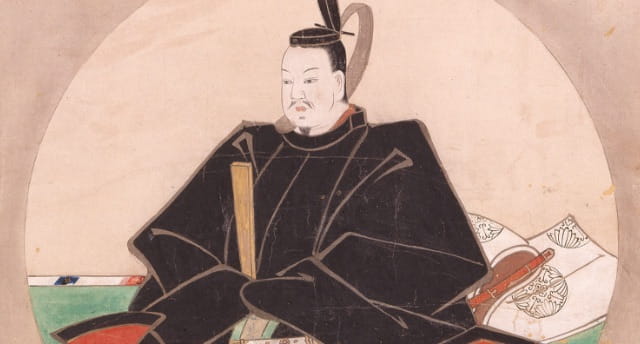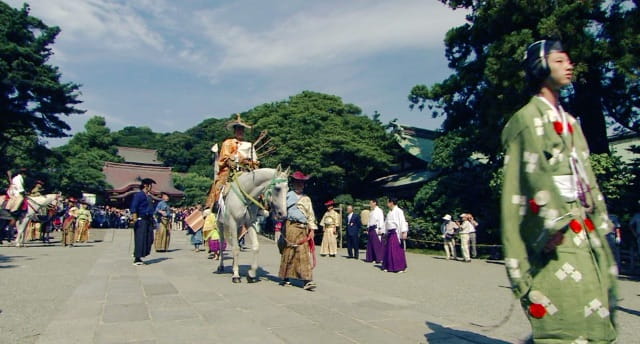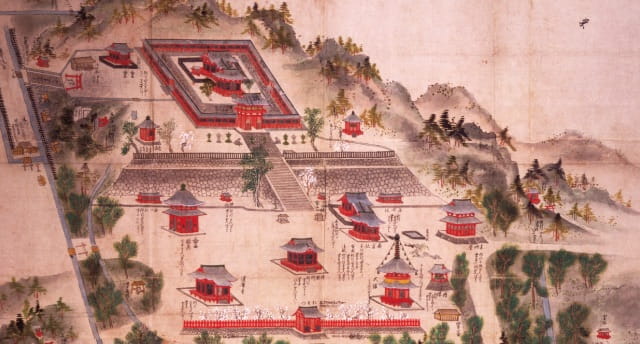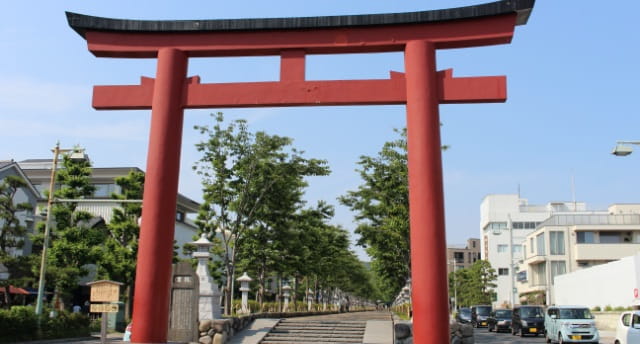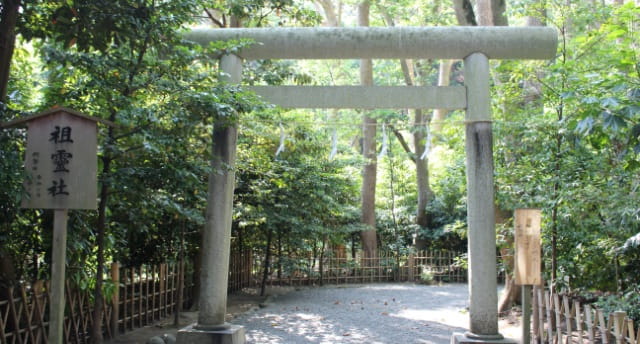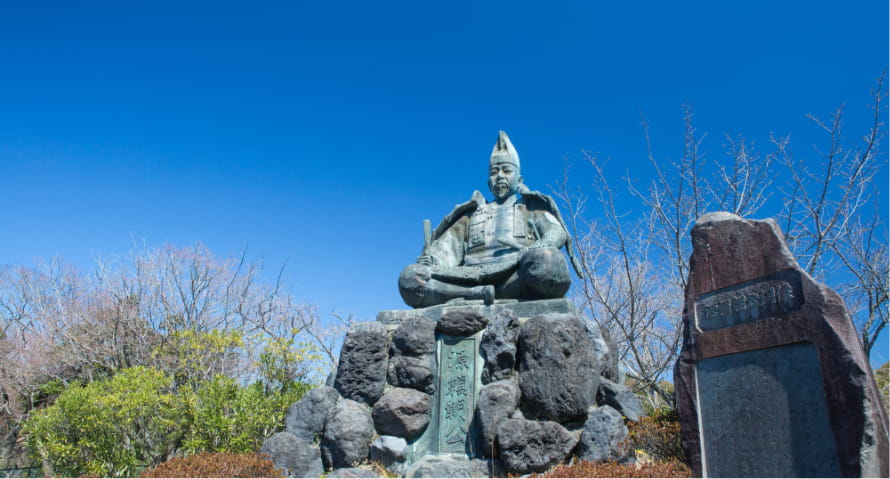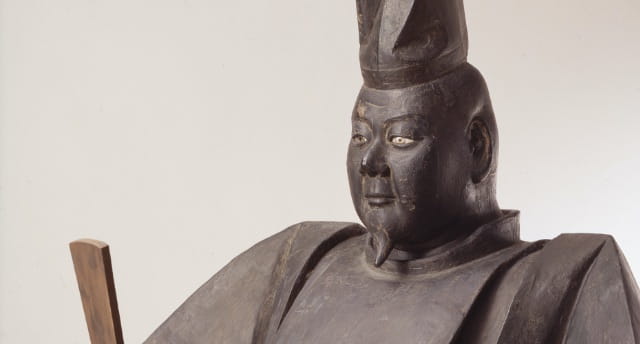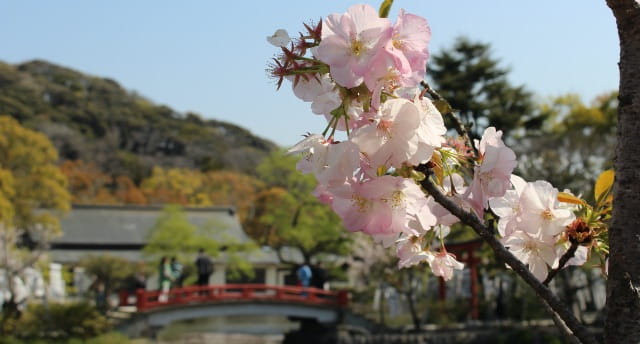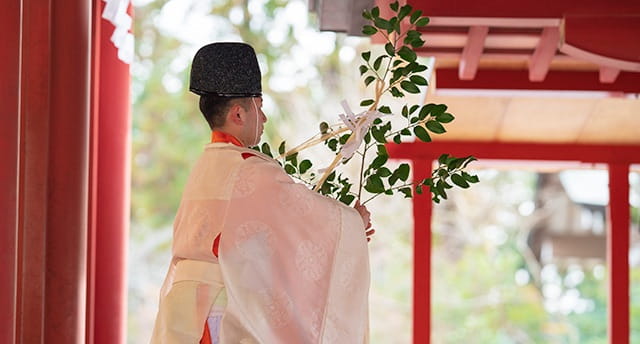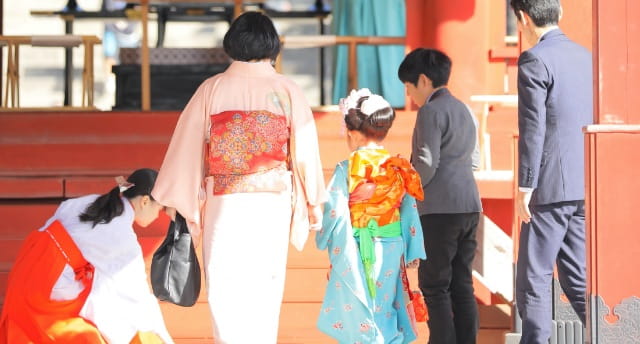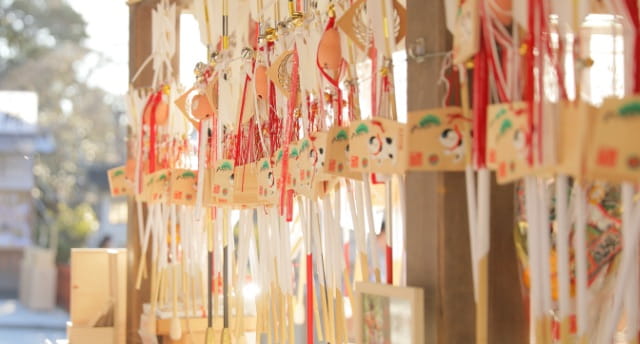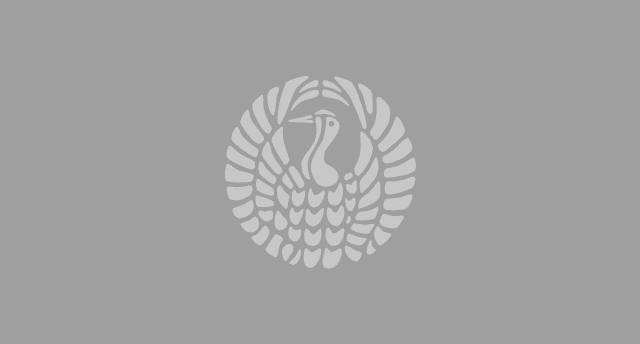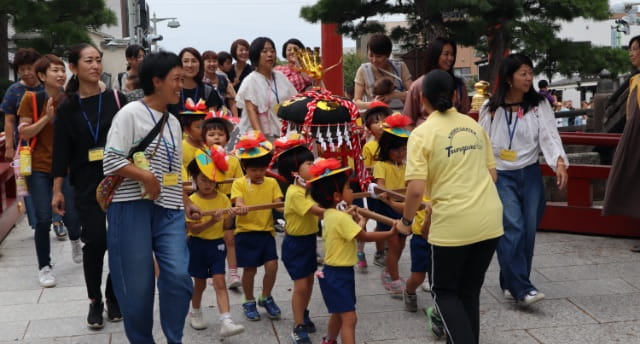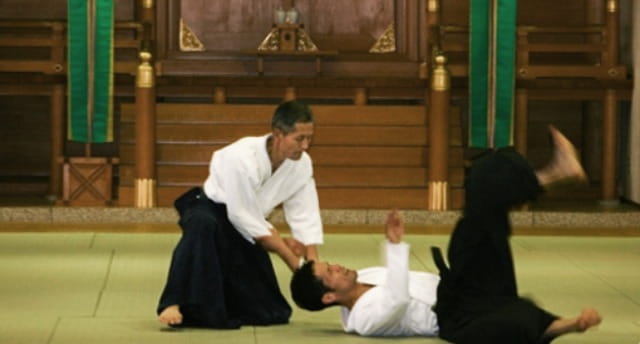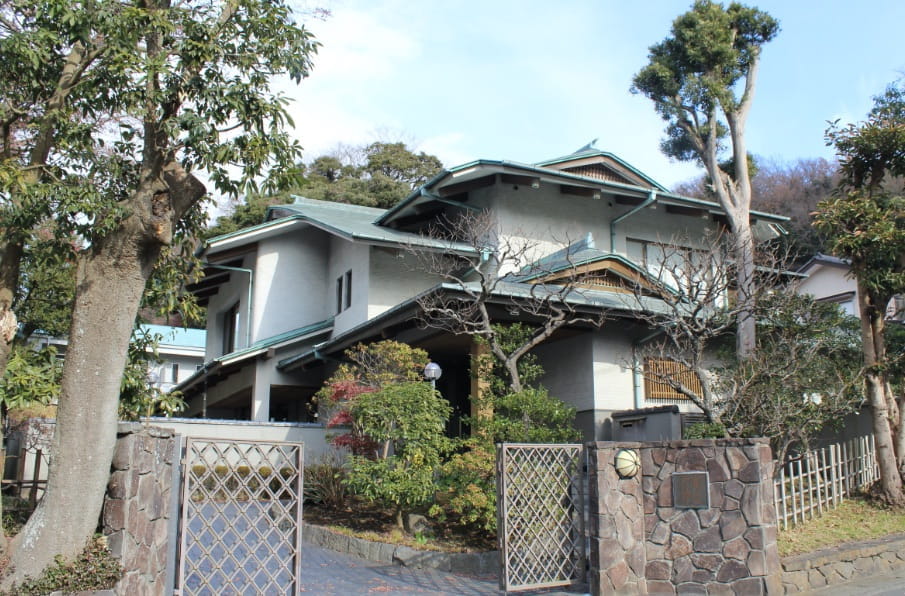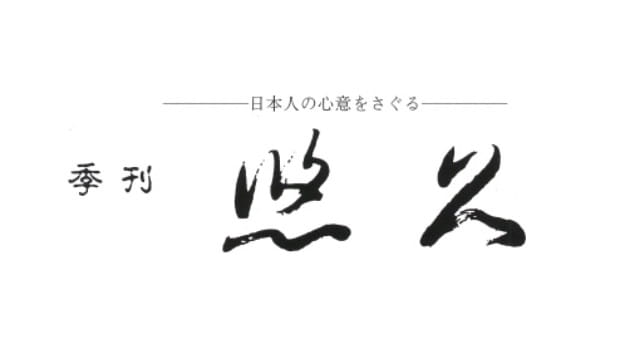Festivals
Serving the Kami Wholeheartedly
The shrine is a place where kami reside and can be contacted via matsuri, which may be translated as “festival” or “ritual” in English. Matsuri is the process of making offerings to the kami after purifying the body and mind, and serving the kami wholeheartedly.
年中の祭り
January
January 1 - New Year's Day (Saitan-sai)

The New Year's Day festival is a ritual that is held early in the morning of New Year's Day at the Imperial Palace and at shrines across the country. It is a ceremony to celebrate the new year and to pray for the prosperity of the imperial family, the prosperity of the nation, the peace of the shrine’s worshipers and world peace, and for blessings from the kami during the year to come.
Our New Year's Day festival is held at 5:00 a.m. on the dawn of the year.
After the New Year's Day ceremony, the Kagura opening ceremony is held at 7:00 a.m. at the Mai-Den, where the Yaotome dance is performed.
January 3 - Celebration of the Foundation of the Imperial Line (Genshi-sai)

At this festival, His Majesty the Emperor performs a Shinto ritual on the 3rd day of the new year at the San-den shrine in the Imperial Palace.
This festival originates from the fact that Amaterasu sent Ninigi no Mikoto from heavenly Takamagahara to Ashihara no Nakatsukuni, where he ruled the land. At the beginning of the year, His Majesty the Emperor celebrates the beginning of the new year, and the Genshi-sai festival is held at shrines all over Japan to pray for the prosperity of the imperial family and the prosperity of the nation.
January 4 - Start of Carpentry Work Ceremony (Chona-hajime-shiki)

The Start of Carpentry Work ceremony has been held since ancient times before the start of important construction projects. It is said that a ceremony called "Construction Launch" was held at the time of the construction of Tsurugaoka Hachimangu.
Today, the Start of Carpentry Work ceremony is carried out to mark the beginning of construction throughout Kamakura.
Every year on January 4, a sacred tree trunk is carried by the Shinto priests from the Ninotorii gate along the steps accompanied by the traditional song Koyari-ondo (song for bringing out force). The sacred tree is enshrined in the ritual hall in front of the Lower Worship Hall, and after a ritual is performed by the priests, a building craftsman (the conductor of the ritual) and his crew perform a traditional ritual using ancient tools and techniques.
January 5 - Dispelling Evil with Sacred Arrows (Joma-shinji)

At 10:00 a.m., a ritual is performed in the Lower Worship Hall, and following which, on the west side of the hall, archers in traditional costume will shoot arrows at a large target to dispel evil spirits.
Minamoto Yoritomo founded a ceremony in the time of the shogunate, which was called Omatohajime or Oyumihajime. It is traditionally believed that the bow and arrow have the power to ward off evil, and the use of the bow and arrow to drive out evil is not limited to samurai families. The hamaya arrow-shaped amulet of this shrine is also based on this belief and tradition.
The target used in the ritual is 5 shaku and 2 sun (about 156 cm), which is the reason why this ritual is also called Omatoshiki (meaning, large-target ritual). The word oni (demon) is written on the back of the target and an arrow is shot into the target from a distance of 15 ken (27 m).
January 1-7 - Offering of the Sacred Seal (Gohan-gyoji)

This ceremony is held from New Year's Day to the 7th of January.
It is said that during the Kamakura period, samurai warriors would receive a sacred seal on their foreheads when they were going into battle. By pressing the seal to their foreheads, they would pray for healing of illness, warding off evil, and good health. The seal is said to make one clear-headed, and therefore students who are about to take entrance examinations are often seen lining up for this ritual.
This sacred seal is usually enshrined deep in the inner sanctum of the main hall, near the shrine's throne, but during the New Year's period, it is moved temporarily to the event hall.
Those who are given the sacred seal will receive a sacred tag. This sacred tag is called a Go-o-hoin. It is imbued with divine power and was used in ancient times to make a pledge.
Coming of Age Ceremony (Seijin-sai)

On the second Monday of January, on Coming of Age Day, we hold a Coming of Age Ceremony at the Lower Worship Hall to welcome the new adults.
Since ancient times, men have gone through the coming-of-age ceremony of Genpukui and women have gone through the Mogi ceremony in order to be welcomed into society as adults.
This is a ritual where the participants can express gratitude to the kami and their ancestors for their blessings, and thank their parents and siblings for allowing them to grow up safely, as well as pledge their awareness and responsibility as adults before the kami. The new adults pray to the kami while holding a white feather arrow instead of a tamagushi which is normally used for rituals.
January 15 - New Year’s Bonfire (Sagicho-shinji)

The Sagicho-shinji ritual is a folkloric event commonly known as Tondo-yaki or Dondon-yaki. At Tsurugaoka Hachimangu, the rirtual is held at 7:00 a.m. on January 15 by the Genji Pond.
The New Year's shimekazari (New Year's decorations), kadomatsu (traditional Japanese entrance decorations), and other items that have been given to the shrine are piled up for the festival, and then burned in a pure fire.
This festival is a fire festival that removes impurities at the beginning of the year, and prays for the arrival of warm spring and an abundant harvest for the year.
Tsurugaoka Yakuyoke Grand Festival (including Saturday and Sunday in late January)

In addition to warding off evil for applicants at any time of the year, a special event called the Tsurugaoka Yakuyoke Grand Festival is held at the end of January, including Saturdays and Sundays.
It is said that misfortune and illness are more likely to occur during years of bad luck, and it is also said that the years of bad luck can have a negative influence on your family and the people around you. On the other hand, years of bad luck are also an important time in our lives when we are at a turning point, and for this reason they are also a time to be cherished. Our ancestors, through their experiences and wisdom, discovered the years of bad luck and created a tradition of praying to the kami for a safe year and receiving their blessings as a precaution. If you are facing a year of bad luck, please pray to get rid of the bad luck.

